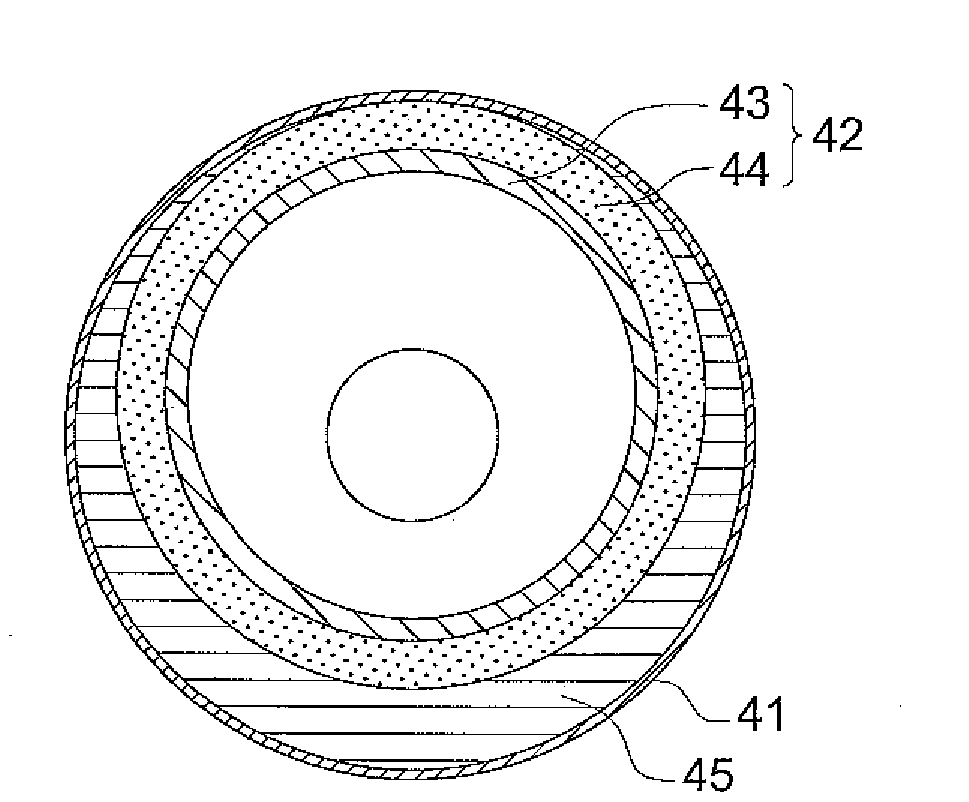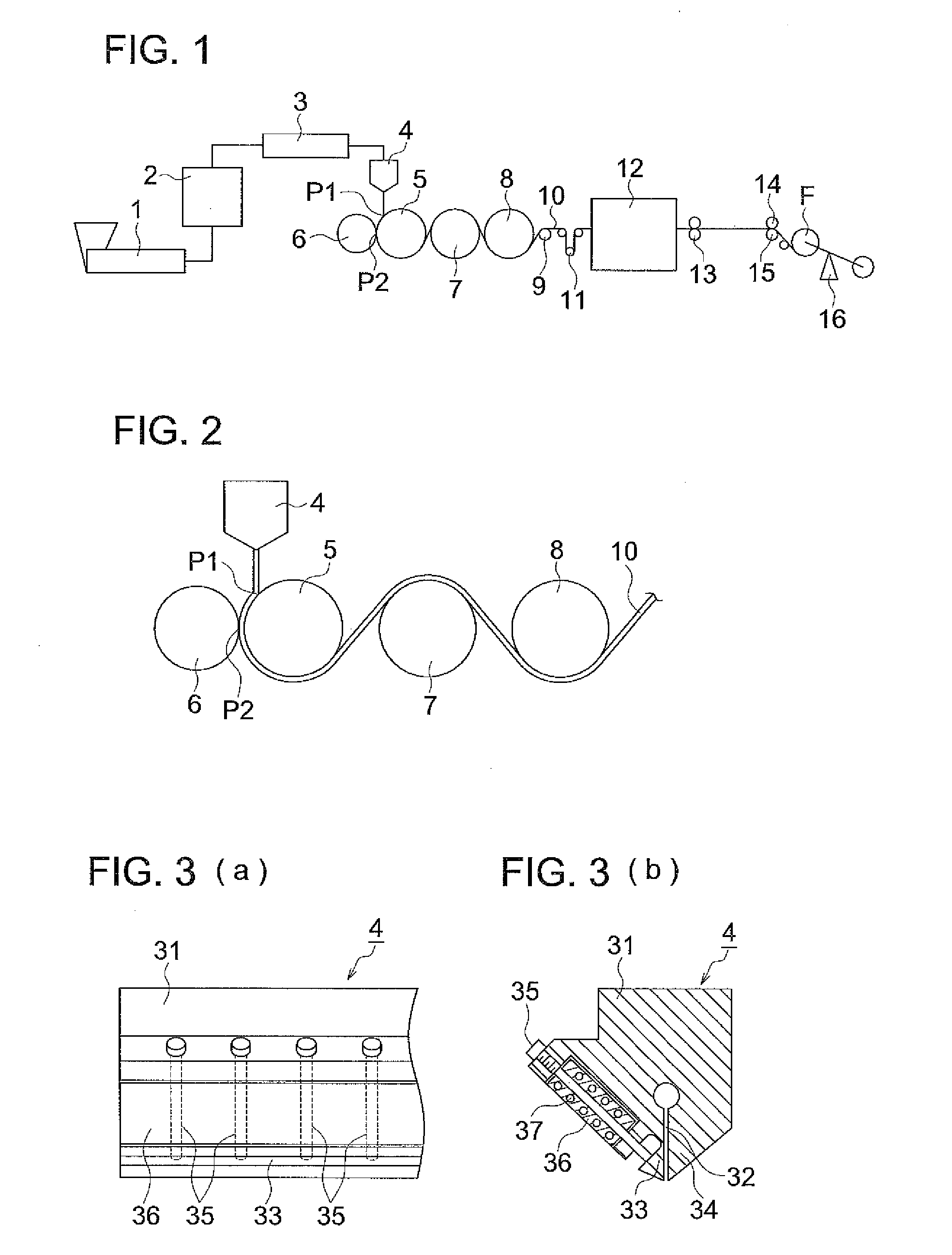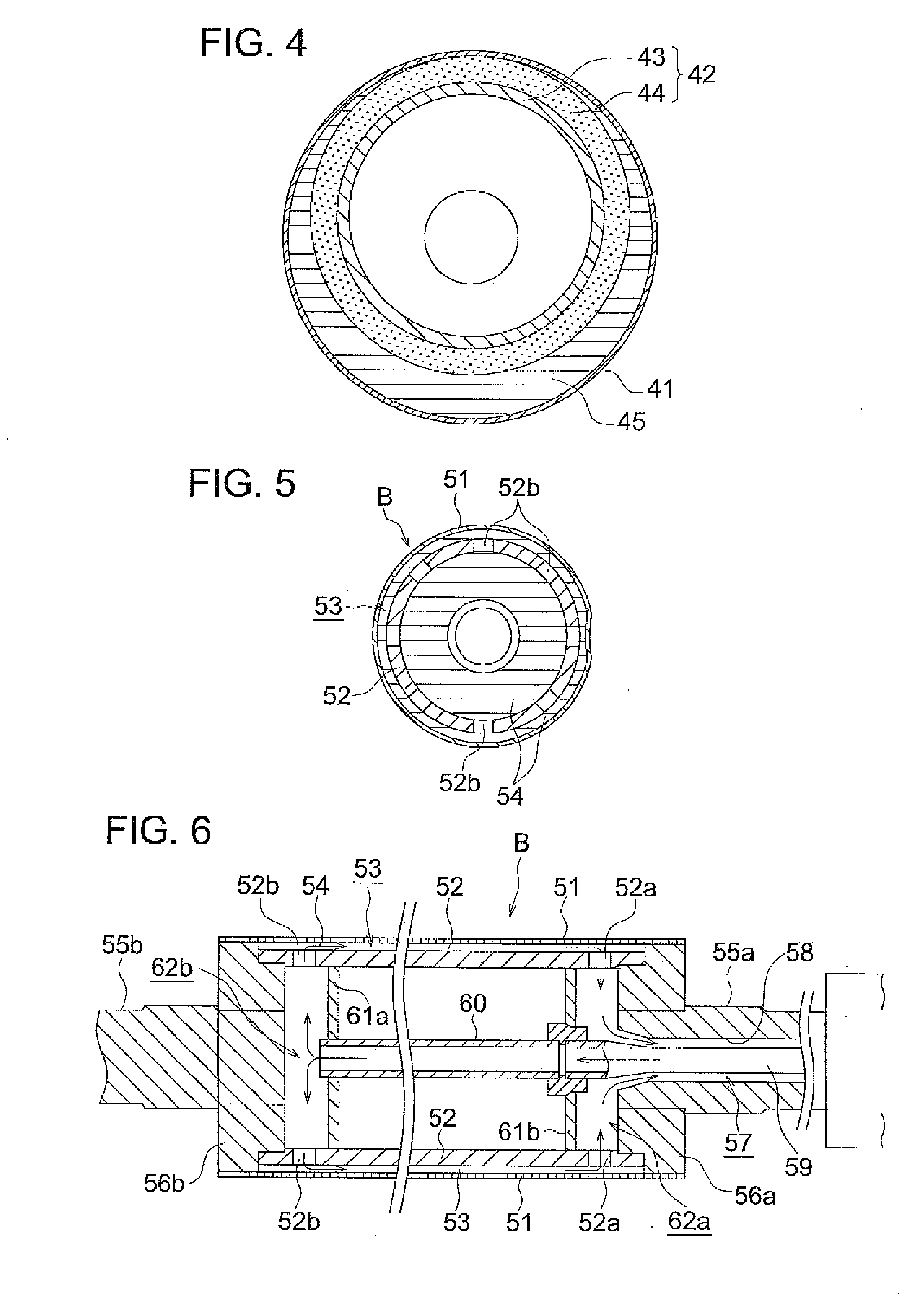Process for producing cellulose acylate film, cellulose acylate film, polarizer, and liquid-crystal display
- Summary
- Abstract
- Description
- Claims
- Application Information
AI Technical Summary
Benefits of technology
Problems solved by technology
Method used
Image
Examples
example 1
Preparation of Cellulose Acylate
Synthetic Example 1
[0272]To 30 g of cellulose (dissolved pulp; produced by Nihon Seishi Co., Ltd.,), 30 g of acetic acid was added, and then the resulting mixture was stirred at 54° C. for 30 minutes. After the mixture was cooled, 150 g of acetic anhydride and 1.2 g of sulfuric acid both of which were cooled in an ice water bath were added thereto so that esterification was carried out. In the esterification reaction, the reacting mixture was stirred for 150 minutes while controlling the temperature so as not to over 40° C. After termination of the reaction, a mixture of 30 g of acetic acid and 10 g of water was added dropwise over 20 minutes so that excessive anhydride was hydrolyzed. While the temperature of the reaction solution was maintained at 40° C., 90 g of acetic acid and 30 g of water were added and stirred for 1 hour. The mixture was put into an aqueous solution containing 2 g of magnesium acetate and stirred for some time. After that, the ...
synthetic examples 2 to 8
[0273]Cellulose acylates C-2 to C-8 were prepared in the similar esterification operation to Synthetic example 1 except that acetic acid, acetic anhydride, propionic acid, propionic anhydride, butyric acid and butyric anhydride were used as shown in Table 1.
TABLE 1Acyl groupAcylFattyFatty acidsubstitutiongroupCelluloseacidanhydridedegreetotalacylateIIIIIIAcPrBucarbon numberMwC-130015002.800.00—5.60220000C-2872051502.450.43—6.19211000C-310100101000.651.73—6.49201000C-4872043622.20—0.636.92198000C-5902081251.651.27—7.11238000C-6704081251.451.43—7.19241000C-7209091240.352.20—7.30223000C-809041250.152.73—8.49248000Each additive described in abbreviation in Table 1 is detailed below.Ac: Acetyl GroupPr: Propionyl groupBu: Butyryl groupI: Acetic acidII: Propionic acid or butyric acidI: Acetic anhydrideII: Propionic anhydride or n-butyric anhydrideMw: Weight average molecular weight (The weight average molecular weight was measured by GPC HLC-8220 manufactured by Tosoh Corp.)
synthetic examples 9 to 41
[0274]Cellulose acylates C-9 to C-41 were prepared employing the similar fatty acids and fatty acid anhydrides to Synthetic example 1, except that the acyl group substitution degrees were changed to those described in Table 2.
TABLE 2Acyl groupAcyl groupCellulosesubstitution degreetotal carbonacylateAcPrBuPenumberC-9 2.58———5.16C-100.351.62——5.56C-110.851.42——5.96C-121.351.08——5.94C-132.650.23——5.99C-142.650.27——6.11C-152.65—0.20—6.10C-162.65——0.166.10C-170.951.43——6.19C-181.650.97——6.21C-191.90—0.60—6.20C-202.00——0.446.20C-210.451.80——6.30C-221.251.27——6.31C-232.10—0.55—6.40C-241.15——0.856.55C-250.691.74——6.60C-260.352.03——6.79C-270.901.67——6.81C-281.351.37——6.81C-292.40——0.426.90C-300.651.90——7.00C-311.35——0.917.25C-321.051.73——7.29C-330.252.33——7.49C-340.552.13——7.49C-351.051.80——7.50C-361.85—0.95—7.50C-372.10——0.667.50C-380.102.60——8.00C-391.00—1.50—8.00C-401.20—1.65—9.00C-411.30——1.389.50
[0275]In Table 2, the abbreviations of Ac, Pr, and Bu used for the acyl group substitution d...
PUM
| Property | Measurement | Unit |
|---|---|---|
| Temperature | aaaaa | aaaaa |
| Temperature | aaaaa | aaaaa |
| Temperature | aaaaa | aaaaa |
Abstract
Description
Claims
Application Information
 Login to View More
Login to View More - R&D
- Intellectual Property
- Life Sciences
- Materials
- Tech Scout
- Unparalleled Data Quality
- Higher Quality Content
- 60% Fewer Hallucinations
Browse by: Latest US Patents, China's latest patents, Technical Efficacy Thesaurus, Application Domain, Technology Topic, Popular Technical Reports.
© 2025 PatSnap. All rights reserved.Legal|Privacy policy|Modern Slavery Act Transparency Statement|Sitemap|About US| Contact US: help@patsnap.com



